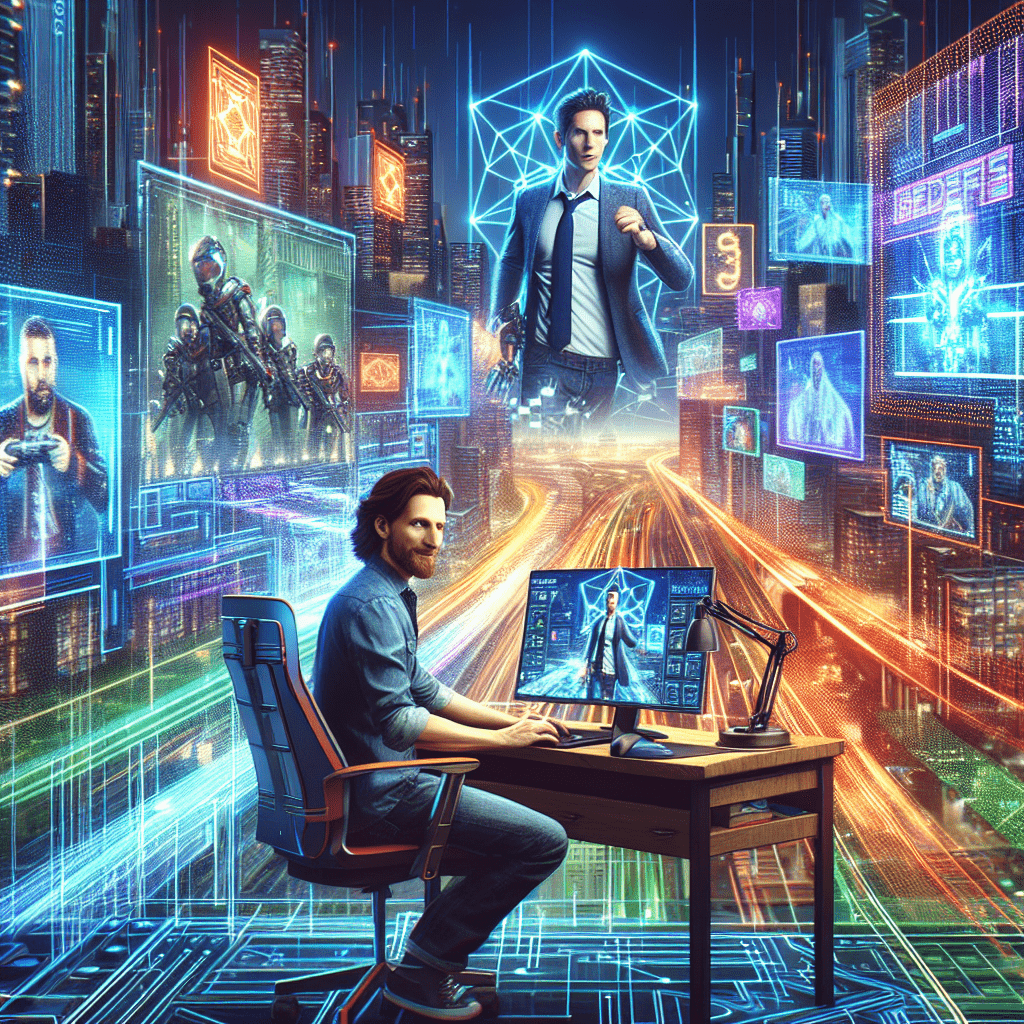Introduction to Innovations in Gaming Conference Organization
A. Overview of the gaming industry’s evolution
The gaming industry has been on a wild ride, leveling up from pixelated Pong to the breathtaking open worlds of today’s blockbusters. It’s a journey of innovation that’s seen the evolution of consoles, the birth of online multiplayer, and the rise of mobile gaming. As the industry grows, it’s not just about the games; it’s about the vibrant community that’s formed around them. This community thrives on connection, and gaming conferences have become the epicenters of this digital culture.
B. The significance of conferences in the gaming community
Conferences are the power-ups of the gaming world, where developers, players, and industry moguls gather to share, learn, and celebrate the art of gaming. They’re the stages for groundbreaking announcements and the battlegrounds for esports supremacy. But as the industry evolves, so too must the conferences that bring its players together. Let’s dive into the latest game-changing innovations in gaming conference organization.
Advancements in Digital Platforms for Virtual Conferencing
A. Transition from physical to virtual spaces due to global challenges
When life gave us lemons, the gaming industry made lemonade—virtual lemonade, that is. Faced with global challenges that made in-person gatherings a no-go, the industry pivoted to digital platforms faster than a speedrunner chasing a world record. Virtual conferences have kept the community connected, ensuring that not even the boss level of reality could stop the show.
B. Interactive features that simulate the conference experience
These aren’t your grandma’s video calls. Virtual gaming conferences now come packed with features that make you feel like you’re there in person. Think live chat, Q&A sessions, and even virtual booths where you can snag some swag. It’s about creating an experience that’s as close to the real deal as possible, without the queue for the bathroom.
| Feature | Benefit |
|---|---|
| Live Chat | Real-time interaction |
| Virtual Booths | Digital swag and demos |
| Q&A Sessions | Direct communication with speakers |
C. Case studies of successful virtual gaming conferences
Take the recent ‘Stay Home and Game’ virtual conference. With a lineup of indie devs and AAA studios, it showcased the latest gaming software trends while keeping everyone safely at home. Attendees could navigate a virtual venue, hopping from panel to panel with the click of a button. It was a critical hit in the gaming community, proving that virtual can be victorious.
Integration of Augmented and Virtual Reality
A. Enhancing attendee engagement through immersive technologies
Why just attend a conference when you can be part of it? Augmented Reality (AR) and Virtual Reality (VR) are the new cheat codes for attendee engagement. By strapping on a headset or pointing a smartphone, attendees can step into a conference that’s as immersive as the games they love. It’s a whole new world of interaction, and it’s right at our fingertips.
B. Examples of AR and VR applications in gaming conferences
Imagine watching a keynote where the speaker’s slides come to life around you, or networking in a virtual lounge that feels straight out of a sci-fi epic. That’s the power of AR and VR in gaming conferences. For instance, the ‘VR Game Fest’ used VR to transport attendees to a virtual expo hall, complete with game demos that felt as real as the physical world.
| Technology | Application |
|---|---|
| AR | Interactive presentations |
| VR | Virtual expo halls |
C. Future prospects of mixed reality in conference settings
The future is bright, and it’s wearing a headset. Mixed reality could take gaming conferences to the next level, blending the physical and digital worlds until they’re indistinguishable. As the tech improves, we could see conferences where virtual and in-person attendees mingle seamlessly. It’s not just a game; it’s the future of connection.
Gamification of Conference Experiences
A. Incorporating game design elements into conferences
Let’s face it, conferences can sometimes be a grind. But what if they were as engaging as playing your favorite game? That’s where gamification comes in, turning the conference experience into an interactive adventure. By incorporating elements like points, leaderboards, and achievements, organizers can make learning and networking as fun as a boss battle (with less risk of virtual death).
B. Benefits of gamification for networking and learning
With gamification, every handshake becomes a quest, and every business card is a collectible. It’s a way to encourage participation and make connections stick. Attendees are more likely to engage when there’s a little competition involved, and they’ll learn more when it’s part of a game. It’s a win-win, with XP on top.
| Gamification Element | Conference Application |
|---|---|
| Points | Tracking participation |
| Leaderboards | Encouraging friendly competition |
| Achievements | Rewarding engagement |
C. Analysis of gamified conference models and their outcomes
Studies show that gamified conferences lead to higher engagement and satisfaction rates. For example, the ‘GameCon Quest’ model rewarded attendees for each session attended and contact made. The result? A leaderboard of the most engaged attendees and a whole lot of networking. It’s proof that when it comes to conferences, playing games can be serious business.
Sustainable Practices in Gaming Conference Organization
A. The importance of sustainability in large-scale events
As the guardians of virtual worlds, the gaming community is increasingly aware of its impact on the real one. Sustainable practices in conference organization are not just a bonus level; they’re a necessity. From reducing waste to offsetting carbon footprints, green initiatives are becoming the standard for responsible event planning.
B. Innovative approaches to reducing the environmental impact
Organizers are leveling up their eco-game with strategies like digital swag bags and plant-a-tree programs. These initiatives not only reduce waste but also create a positive legacy for each event. It’s about making sure that the only footprints we leave are in the digital sand.
| Sustainable Practice | Environmental Benefit |
|---|---|
| Digital Swag | Reduces waste |
| Plant-a-Tree Programs | Offsets carbon footprint |
C. Spotlight on eco-friendly gaming conferences and their strategies
The ‘Green Pixel’ conference is a shining example of sustainability in action. They’ve implemented a zero-waste policy, sourced local food for catering, and provided free public transport passes for attendees. It’s a blueprint for future events that shows caring for the planet can be part of the game plan.
Leveraging Big Data and Analytics for Personalized Experiences
A. The role of data in understanding attendee behavior
In the world of gaming conferences, data is the ultimate power-up. By analyzing attendee behavior, organizers can tailor the experience to individual preferences. It’s like having a personal guide through the maze of panels, workshops, and demos. With big data, we’re not just attendees; we’re VIPs.
B. Customizing the conference journey for each participant
Imagine a conference that knows you’re a fan of retro gaming and recommends the perfect panel. Or one that connects you with fellow indie developers. That’s the magic of data-driven personalization. It’s about making every attendee feel like the conference was designed just for them.
| Data Type | Personalization Example |
|---|---|
| Session Attendance | Tailored panel recommendations |
| Networking Interests | Targeted connection suggestions |
C. Ethical considerations and privacy concerns
With great data comes great responsibility. It’s crucial to balance personalization with privacy, ensuring that attendees’ information is protected. Ethical data use is the boss level of conference organization, and it’s one we must all be prepared to tackle.
The Future of Networking: AI and Machine Learning
A. AI-driven matchmaking for professional connections
Networking at conferences can sometimes feel like a game of chance, but AI is changing that. With machine learning algorithms, we can make connections that are less random encounter and more perfect match. It’s like having a networking sidekick that knows exactly who you should team up with.
B. Machine learning algorithms to enhance conference schedules
AI isn’t just for matchmaking; it’s also for schedule-making. By analyzing past behavior, AI can suggest the sessions and events that will hit the high score for each attendee. It’s a personalized itinerary that ensures you won’t miss out on the hidden gems of the conference.
| AI Application | Networking Benefit |
|---|---|
| Matchmaking | Targeted professional connections |
| Schedule Optimization | Personalized event recommendations |
C. Predictive analytics for optimizing conference planning and execution
Predictive analytics is like a crystal ball for conference organizers. By forecasting trends and attendee preferences, they can plan events that are always one step ahead. It’s about anticipating the needs of the community and delivering an experience that’s as innovative as the games it celebrates.
Security Measures in the Age of Digital Conferences
A. Challenges of ensuring cybersecurity in online events
In the digital realm, security is the final boss. As conferences move online, the need for robust cybersecurity measures has never been greater. Hackers and cyber threats lurk in the shadows, but with the right defenses, we can keep our virtual venues as safe as our save files.
B. Innovative solutions for protecting digital attendees and their data
Encryption, two-factor authentication, and secure networking protocols are the shields and armor of the digital conference world. By implementing these solutions, organizers can protect attendees from the dark wizards of the web. It’s about creating a safe space where the only thing to worry about is how to fit in one more panel before the day ends.
| Security Measure | Benefit |
|---|---|
| Encryption | Secures data transmission |
| Two-Factor Authentication | Verifies user identity |
| Secure Protocols | Protects network integrity |
C. Case studies of gaming conferences with robust security protocols
The ‘SecurePlay’ conference is a case study in cybersecurity done right. With end-to-end encryption for all communications and a dedicated team monitoring for threats, they set the gold standard for digital event security. Attendees could focus on the fun, knowing their data was locked down tighter than the loot in Fort Knox.
Conclusion: The Impact of Innovation on Gaming Conference Organization
A. Recap of the key innovations discussed
We’ve explored the virtual worlds of digital conferencing, the immersive realms of AR and VR, and the game-like engagement of gamification. We’ve seen how sustainability can be part of the game plan and how data can personalize the experience. AI and machine learning have shown us the future of networking, and cybersecurity has kept our digital playgrounds safe.
B. The potential long-term effects on the gaming industry
These innovations are more than just features; they’re the building blocks of a new era in gaming conferences. As we level up our approach to organization, we’re creating events that are more inclusive, engaging, and exciting. It’s a ripple effect that will touch every corner of the gaming industry, from the indie developer to the esports superstar.
And so, as we log off from this digital odyssey, we’re left with a sense of excitement for what’s to come. The gaming community is always pushing the boundaries, and its conferences are no exception. The future is bright, and it’s filled with innovation. Game on!
FAQs
What are the benefits of virtual gaming conferences?
Virtual gaming conferences offer accessibility, convenience, and innovative features like live chat and virtual booths, making them an engaging alternative to in-person events.
How do AR and VR enhance gaming conferences?
AR and VR technologies provide immersive experiences, allowing attendees to interact with conference content in a more engaging and memorable way.
What is gamification, and how is it applied to conferences?
Gamification involves using game design elements, such as points and leaderboards, to make conference participation more interactive and rewarding.
Why is sustainability important in gaming conference organization?
Sustainability is crucial for reducing the environmental impact of large-scale events and ensuring that the gaming industry contributes positively to ecological conservation.
How does AI and machine learning contribute to networking at conferences?
AI and machine learning can facilitate targeted professional connections and optimize personal schedules, enhancing the networking experience at conferences.







